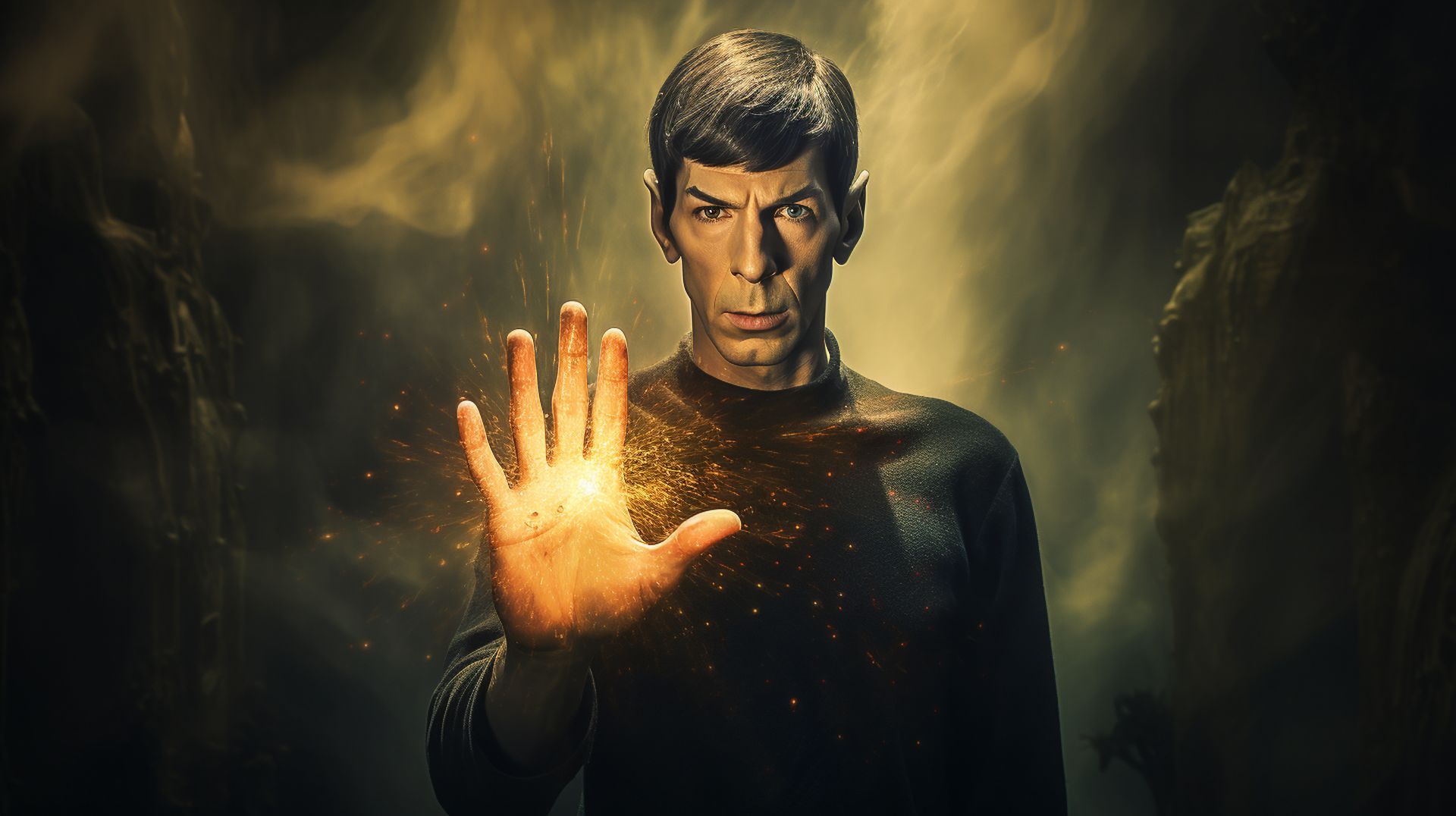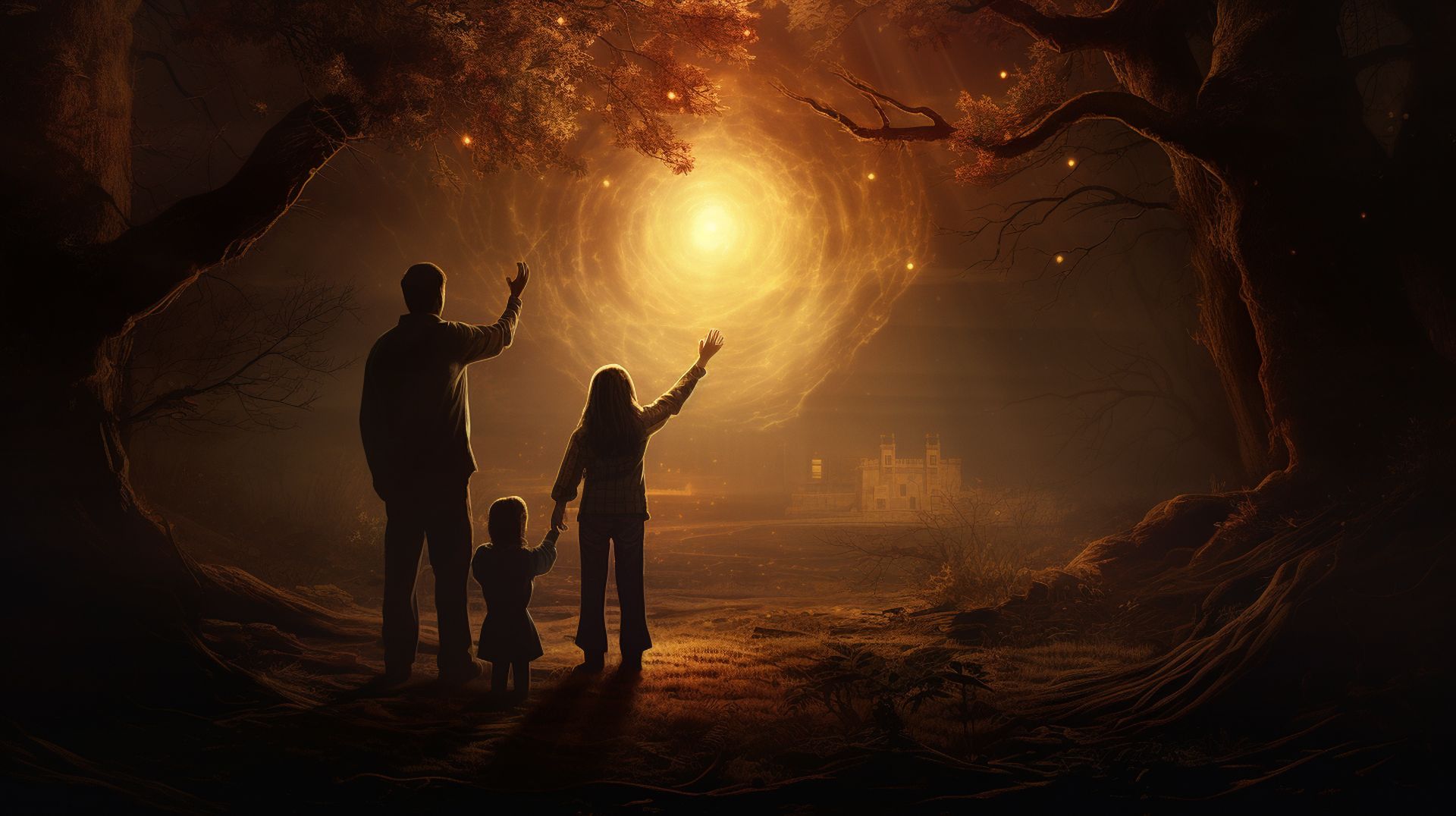In a world where memories linger and voices echo, the advent of “thanabots” invites us to a place where the past can be rekindled, and the voices of those long gone can be heard once again.
In the past year, the world has been entranced by the groundbreaking artificial intelligence known as ChatGPT, sparking both amazement and concern. This large language model, trained on an extensive dataset of over 300 billion words, showcases an astonishing understanding of language and logic, marked by unexpected empathy and a profound ability to transform our lives in both magnificent and possibly dangerous ways.
ChatGPT’s impact on our society is lasting, but in an extraordinary development, a new technology called “thanabots” is rising. These thanabots, or chatbots designed to emulate conversation based on data from the deceased, have the potential to digitally resurrect those who have passed away.
OpenAI has presented ChatGPT, a remarkable AI endeavor known as a large language model. Having been meticulously trained on a comprehensive corpus of text gathered from various online sources, ChatGPT uses this profound body of information to craft responses to human inquiries.
Through an analysis of both the given query and its immense training data, it anticipates the most fitting word for the continuation of the text it generates. The result is a fluid dialogue that is both enlightening and evocative of human discourse. ChatGPT has adeptly passed rigorous examinations, penned academic papers, and earned the confidence of numerous Microsoft researchers, who bear witness to its extraordinary capability to grasp language and apply rational thought.
Thanabots give you the possibilty to chat with Mr. Spock
Large-scale AI constructs such as ChatGPT can undergo distinct training to enhance and customize their interactions. In a significant technological advancement, programmer Jason Rohrer has tapped into the capability to craft astoundingly lifelike chatbots that can emulate the distinctive characteristics of particular persons.
Utilizing the strength of ChatGPT and supplying it with detailed examples of a person’s communication mannerisms and complex aspects of their lives, Rohrer has successfully laid the groundwork for a new age in artificial intelligence.

As a devoted aficionado of all things technical, Rohrer’s exploration commenced with the legendary Mr. Spock from Star Trek. His most recent endeavor led to the unveiling of Project December, an inventive platform that authorizes users to fabricate personalized chatbots through the integration of various data and information.
Remarkably, this pioneering technology even permits individuals to create thanabots, or chatbots patterned after those who have passed away, providing a novel method to sustain and cherish their memory.
Discover the Kundli GPT AI, astrology gets a tech twist
In an extensive article released in July 2021, San Francisco Chronicle’s writer Jason Fagone divulged an insightful exploration of an extraordinary outcome. He described the profound emotional odyssey of Joshua Barbeau, a 33-year-old man who sought the assistance of Project December to construct a virtual entity, a thanabot, mirroring the personality of his late fiancée, tragically lost eight years prior.
The terminology “thanabot” originates from the realm of thanatology, the scholarly investigation of death. Leah Henrickson, a lecturer in digital media and cultures at The University of Queensland, anticipates a surge in the utilization of thanabots in the ensuing decades.
This increase is linked to the escalating number of individuals leaving behind significant digital imprints, such as texts, emails, and social media posts, who have since passed away. This innovative technology provides a new and unique way of preserving memories and connections with those who are no longer with us, marking a groundbreaking stride in our digital era.

“These systems may be created without prior consent from the deceased, or may constitute part of ‘digital estate planning’ wherein someone plans or consents to the creation of their own thanabot,” she wrote in a paper published earlier this year in the journal Media, Culture, & Society.
Industry leaders such as Facebook, Google, Apple, and Microsoft have collected enormous quantities of data, leading to speculation that they may explore the field of thanabots in the near future. It’s conceivable that these technological giants might embark on the development and marketing of these unique chatbots that mimic the personalities of those who have passed away.
RizzGPT brings gamification into the chatbot scene
Given the deep-rooted human interest in maintaining connections with the departed, present across various cultures and societies, the demand for this extraordinary application of artificial intelligence in the form of thanabots is anticipated to be considerable.
ChatGPT’s take on thanabots:
The emergence of “thanabots” marks a provocative and fascinating crossroad in our technological journey. By digitally resurrecting the voices of those who have passed away, these advanced chatbots prompt us to reevaluate not only how we connect with memories and the deceased but also the ethical boundaries of AI. The potential benefits of thanabots, such as aiding in grief or preserving historical memories, are undeniably intriguing. Yet, they raise complex questions about authenticity, consent, and the potential emotional impact on users.
Potential of thanabots
Leah Henrickson, recognizing the possible advantages, has shed light on the potential of thanabots:
“We may be able to provide more suitable support for those grieving, allow for alternative forms of estate management, and contribute to meaningful cultural understandings of death,” she stated.
However, the emergence of thanabots does not come without potential pitfalls. The foundation of these unique chatbots rests on digital data, and in the modern digital landscape, it’s recognized that people may lead very different lives online as compared to their offline realities.

As a result, questions may arise about the true accuracy of thanabots in mirroring the individuals they are patterned after, possibly challenging their authenticity and effectiveness. Moreover, the use of thanabots may not bring the expected therapeutic or cathartic experiences to users, and could instead amplify feelings of sorrow and desolation.
As we stand at the threshold of a new and fascinating epoch, the introduction of thanabots suggests that our understanding of death and finality is on the verge of a transformative shift. The complex interplay between technology, emotion, and the human condition is unfolding, and the journey into this uncharted territory will undoubtedly continue to captivate and challenge our perspectives.
Featured image credit Kerem Gülen/Midjourney
- SEO Powered Content & PR Distribution. Get Amplified Today.
- PlatoData.Network Vertical Generative Ai. Empower Yourself. Access Here.
- PlatoAiStream. Web3 Intelligence. Knowledge Amplified. Access Here.
- PlatoESG. Automotive / EVs, Carbon, CleanTech, Energy, Environment, Solar, Waste Management. Access Here.
- BlockOffsets. Modernizing Environmental Offset Ownership. Access Here.
- Source: https://dataconomy.com/2023/08/08/what-are-thanabots/
- :has
- :is
- :not
- :where
- 1
- 10
- 2021
- 300
- 7
- a
- ability
- Able
- About
- accuracy
- across
- advanced
- advancement
- advantages
- advent
- After
- again
- age
- AI
- All
- allow
- also
- alternative
- an
- analysis
- and
- Anticipated
- anticipates
- Apple
- Application
- Apply
- ARE
- arise
- article
- artificial
- artificial intelligence
- AS
- aspects
- Assistance
- Astrology
- At
- authenticity
- away
- based
- BE
- Bear
- been
- behind
- benefits
- between
- Billion
- body
- both
- boundaries
- bridging
- bring
- Brings
- but
- by
- called
- CAN
- capability
- captivate
- challenge
- challenging
- characteristics
- chatbot
- chatbots
- ChatGPT
- cherish
- COM
- come
- Communication
- compared
- complex
- comprehensive
- Concern
- condition
- confidence
- Connect
- Connections
- consent
- considerable
- constitute
- construct
- continuation
- continue
- contribute
- Conversation
- could
- craft
- create
- created
- creation
- cultural
- Culture
- customize
- Dangerous
- Dark
- data
- Death
- decades
- deceased
- December
- Demand
- described
- designed
- detailed
- Development
- dialogue
- different
- digital
- Digital media
- digitally
- distinct
- distinctive
- does
- Earlier
- earned
- echo
- effectiveness
- emails
- embark
- emergence
- Empathy
- enable
- endeavor
- enhance
- enormous
- entity
- epoch
- Era
- estate
- Ether (ETH)
- ethical
- Even
- examples
- expected
- Experiences
- exploration
- explore
- extensive
- extraordinary
- fascinating
- feelings
- field
- finality
- fitting
- fluid
- For
- form
- forms
- Foundation
- Francisco
- from
- future
- gamification
- gaps
- gathered
- generates
- giants
- Give
- given
- gone
- grasp
- groundbreaking
- groundwork
- Group
- Have
- having
- he
- heard
- his
- historical
- How
- HTTPS
- human
- image
- immense
- Impact
- in
- Increase
- individuals
- information
- innovative
- innovative technology
- Inquiries
- insightful
- instead
- integration
- Intelligence
- interactions
- interest
- into
- intriguing
- Introduction
- investigation
- invites
- IT
- ITS
- journey
- jpg
- July
- known
- landscape
- language
- large
- lasting
- Late
- lead
- leaders
- leading
- leaving
- lecturer
- Led
- legendary
- LG
- light
- linked
- Lives
- logic
- Long
- longer
- lost
- maintaining
- man
- management
- marked
- Marketing
- marking
- max-width
- May..
- meaningful
- Media
- Memories
- Memory
- method
- meticulously
- Microsoft
- might
- mirroring
- model
- Modern
- more
- Moreover
- most
- mr
- Nature
- Near
- New
- no
- novel
- number
- numerous
- of
- offline
- on
- once
- online
- only
- or
- our
- Outcome
- over
- own
- part
- particular
- passed
- past
- People
- Personalities
- Personality
- Personalized
- persons
- perspectives
- Pioneering
- Place
- plans
- platform
- plato
- Plato Data Intelligence
- PlatoData
- possible
- possibly
- Posts
- potential
- present
- presented
- preserving
- Prior
- profound
- Programmer
- project
- provide
- provides
- providing
- published
- Questions
- raise
- Rational
- realities
- realm
- recent
- recognized
- recognizing
- relative
- released
- remarkable
- researchers
- responses
- result
- rigorous
- rising
- she
- shed
- shift
- significant
- since
- Social
- social media
- Social Media Posts
- Society
- Someone
- sought
- Sources
- speculation
- stand
- Star
- Star Trek
- stated
- strength
- stride
- Successfully
- such
- Suggests
- suitable
- supplying
- support
- surge
- Systems
- Take
- Talk
- tech
- Technical
- technological
- Technology
- terminology
- territory
- that
- The
- The Voices
- the world
- their
- Therapeutic
- These
- they
- things
- this
- this year
- those
- thought
- threshold
- Through
- to
- trained
- Training
- Transform
- transformative
- true
- undergo
- understanding
- undoubtedly
- Unexpected
- unfolding
- unique
- university
- unveiling
- us
- use
- users
- uses
- various
- verge
- very
- Virtual
- VOICES
- Way..
- ways
- we
- WHO
- will
- with
- without
- witness
- Word
- words
- world
- writer
- year
- years
- yet
- you
- zephyrnet












